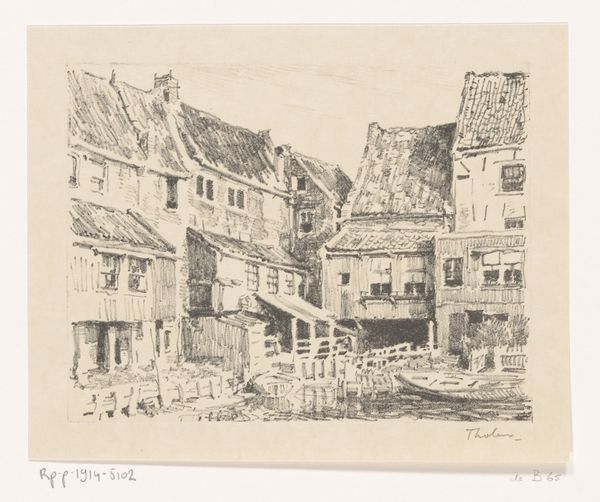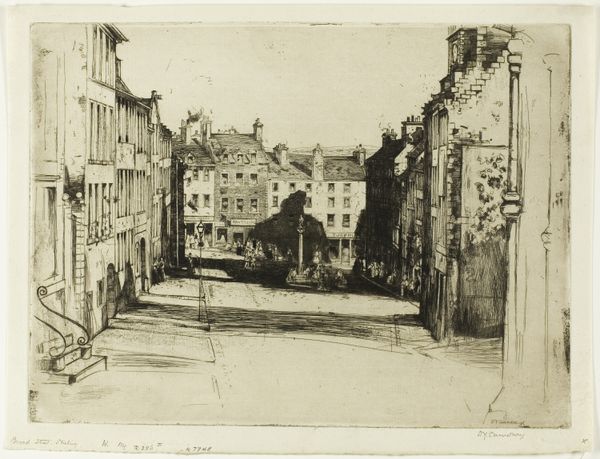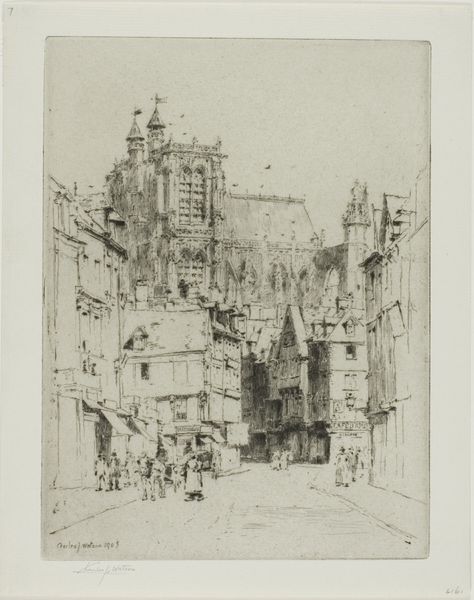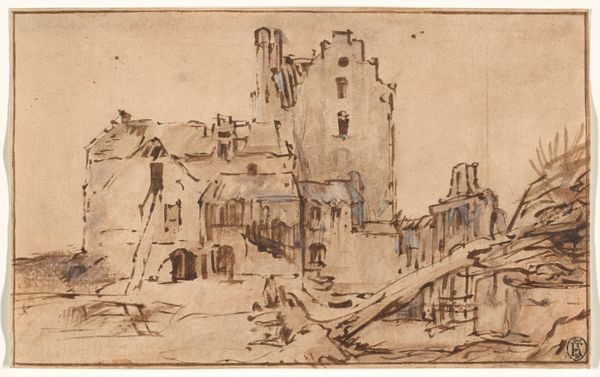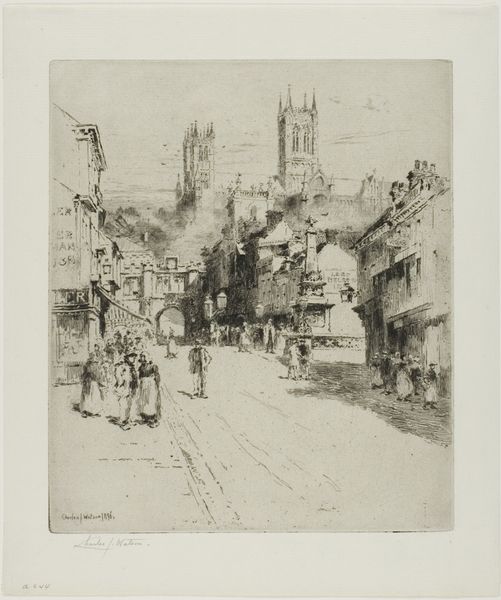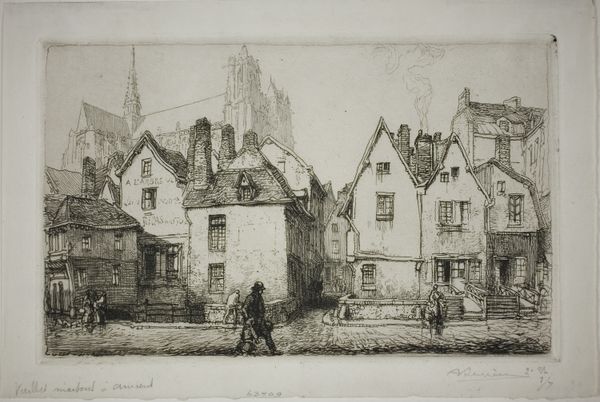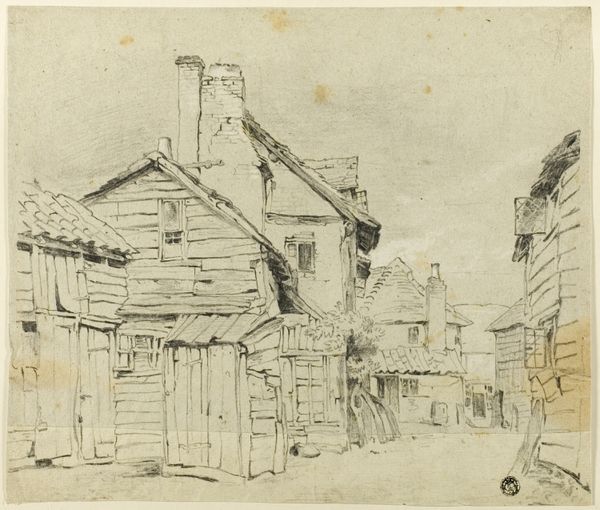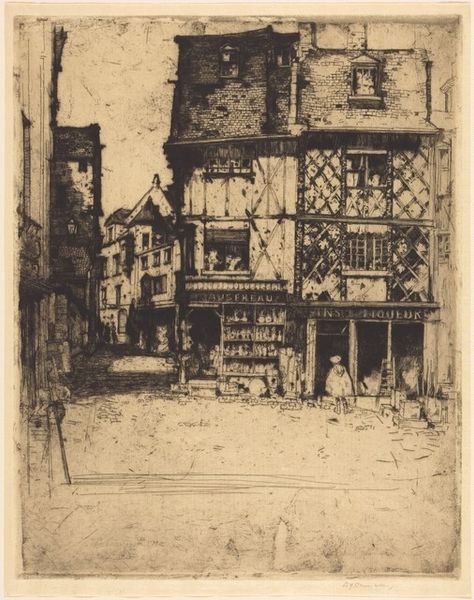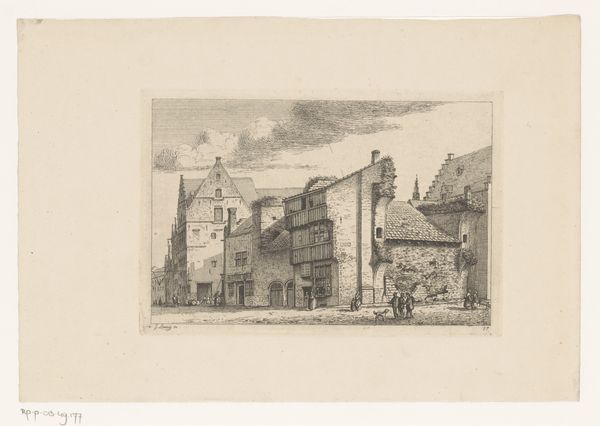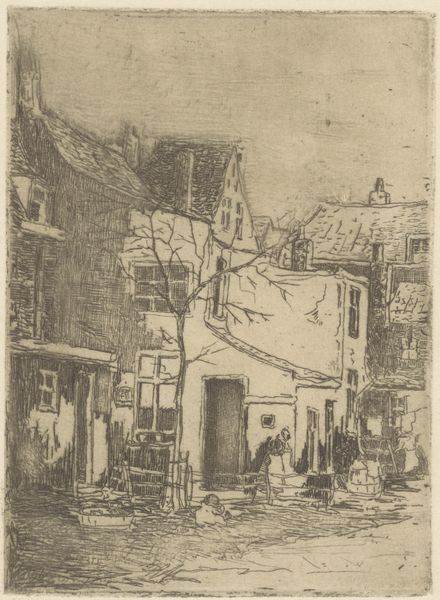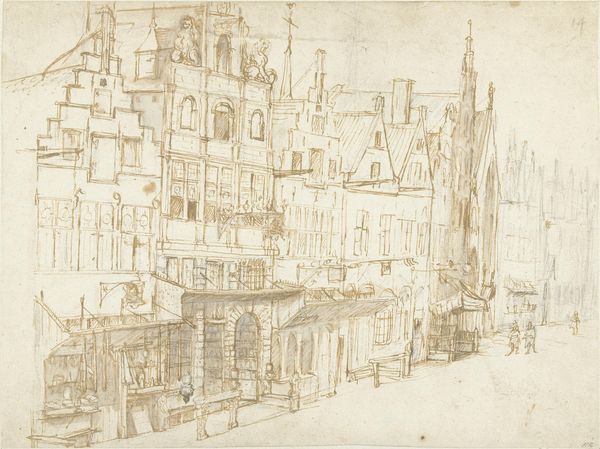
drawing, print, etching, paper, ink
#
drawing
# print
#
etching
#
pencil sketch
#
landscape
#
paper
#
ink
#
cityscape
#
realism
Dimensions: 185 × 270 mm (primary support); 329 × 436 mm (secondary support)
Copyright: Public Domain
Curator: Welcome. Before us hangs Maxime Lalanne's "An Old Quarter of Vitré, Ille-et-Vilaine," an etching and ink drawing from 1879, now residing at The Art Institute of Chicago. Editor: It's fascinating. It evokes a sense of lived history. You can almost feel the weight of the past pressing down on the street. The level of detail created using the etching technique truly emphasizes the material qualities of the old buildings depicted. Curator: Indeed. Lalanne's piece gains much of its power from depicting a specific historical site during a period of great societal change. The printmaking process made this scene widely accessible, contributing to a growing fascination with architectural preservation and cultural identity during the late 19th century. Editor: Precisely. The medium matters here. An etching democratizes art, moving it out of elite circles and into the hands of a broader public. It highlights the contrast between handmade craft and the industrializing world that was consuming cities. Look how the marks build a scene from base materials through human intention! Curator: Yes, and his technical skill, rendering the textures of weathered stone and timber is clear to see. But beyond pure documentation, Lalanne infuses this scene with a certain romanticism. The old quarter is framed as a site of picturesque decay, seemingly untouched by the modernizing forces reshaping French urban landscapes. It romanticizes and somewhat exoticizes what were then perceived as backward parts of French towns and cities. Editor: I agree, this romanticism is palpable, though it speaks to a deeper social unease. The etching serves as a form of material memory, preserving something on paper that’s being actively eroded in reality by modernization. The work prompts questions about labor, value, and what exactly gets remembered or forgotten in a period of rapid urban transformation. Curator: So we see here, a beautiful depiction of urban fabric becomes a reflection of broader cultural anxieties around progress and memory. Editor: Precisely, it uses craft to question consumption and reminds us that artworks are rarely just neutral documents.
Comments
No comments
Be the first to comment and join the conversation on the ultimate creative platform.
